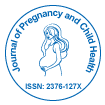Notre groupe organise plus de 3 000 séries de conférences Événements chaque année aux États-Unis, en Europe et en Europe. Asie avec le soutien de 1 000 autres Sociétés scientifiques et publie plus de 700 Open Access Revues qui contiennent plus de 50 000 personnalités éminentes, des scientifiques réputés en tant que membres du comité de rédaction.
Les revues en libre accès gagnent plus de lecteurs et de citations
700 revues et 15 000 000 de lecteurs Chaque revue attire plus de 25 000 lecteurs
Indexé dans
- Index Copernic
- Google Scholar
- Clés académiques
- Recherche de référence
- Université Hamdard
- EBSCO AZ
- OCLC-WorldCat
- Publons
- Fondation genevoise pour l'enseignement et la recherche médicale
- Euro Pub
- ICMJE
Liens utiles
Revues en libre accès
Partager cette page
Abstrait
Anesthetic Neurotoxicity to the Fragile Young Brain: Where Do We Stand?
Sonia Duarte, Alexandra Saraiva and Humberto S Machado
There is no doubt of the benefits of anesthesia in children which has allowed surgical procedures to be performed in the youngest infants, alleviating of pain, anxiety and maintaining stable vital signs. We also believe that anesthesia has indirectly improved quality of life and in many cases accounted for the saving of many young lives. However, in view of conflicting evidence, it is imperative to invest in future studies, based on scrupulous methodology that can undoubtedly translate the association between anesthesia and adverse neurocognitive outcomes in children. But while more and better-designed studies are being conducted, we have the obligation to be judicious and adopt a protective strategy for our young patients. Although we think there is no evidence to postpone or cancel truly urgent surgeries in young children, it seems to be reasonable that at least on children with less that 6 months, but preferably up to 3 years of age, the decision of proceeding to surgery should count the matter of anesthesia-related neurotoxicity as a possible cost. When necessary, anesthesia and surgery should be kept to the minimum time possible. Also, the avoidance of the agents most implicated, as toxic in animal studies such as ketamine, isoflurane and nitrous oxide seems wise 41, 42. As millions of children can be affected worldwide by this yet to explain possible phenomenon there is urgent need and place for a great deal of translational research so we can finally understand the association between neurotoxicity to the young brain and anesthesia, thus devising mitigating strategies. As Albert Einstein would say, “If you always do what you always did, you will always get what you always got.”
Revues par sujet
- Agriculture et Aquaculture
- Biochimie
- Chimie
- Food & Nutrition
- Génétique et biologie moléculaire
- Géologie et sciences de la Terre
- Immunologie et microbiologie
- Ingénierie
- La science des matériaux
- Le physique
- Science générale
- Sciences cliniques
- Sciences environnementales
- Sciences médicales
- Sciences pharmaceutiques
- Sciences sociales et politiques
- Sciences vétérinaires
- Soins infirmiers et soins de santé
Revues cliniques et médicales
- Allaitement
- Anesthésiologie
- Biologie moléculaire
- Cardiologie
- Chirurgie
- Dentisterie
- Dermatologie
- Diabète et endocrinologie
- Gastro-entérologie
- Immunologie
- La génétique
- Maladies infectieuses
- Médecine
- Microbiologie
- Neurologie
- Oncologie
- Ophtalmologie
- Pédiatrie
- Recherche clinique
- Soins de santé
- Toxicologie

 English
English  Spanish
Spanish  Chinese
Chinese  Russian
Russian  German
German  Japanese
Japanese  Portuguese
Portuguese  Hindi
Hindi